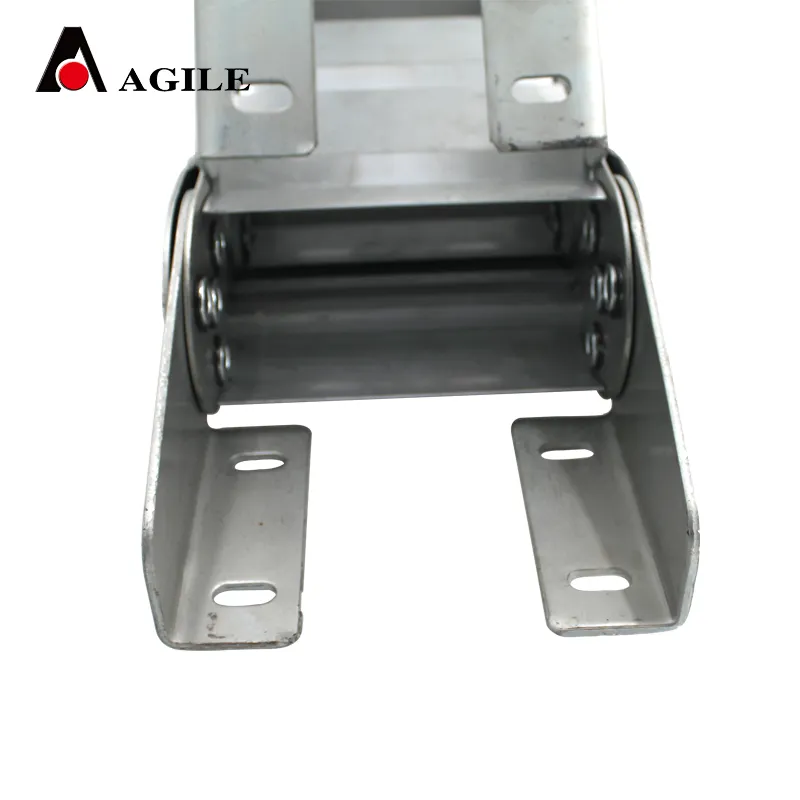Understanding the Benefits and Applications of Drag Chain Links in Industrial Settings
Understanding Drag Chain Links Essential Components for Industrial Applications
In various industrial applications, managing cables and hoses effectively is critical for ensuring smooth operational flow and reducing downtime. This is where drag chain links come into play. These ingenious components play an essential role in protecting and guiding cables and hoses in systems where mobility and flexibility are required. In this article, we will delve into the functionality, design, and applications of drag chain links, highlighting their significance in modern machinery.
What is a Drag Chain Link?
A drag chain link, often referred to as a cable carrier or drag chain, is a series of interconnected links that form a flexible chain. This chain is designed to hold and manage cables, hoses, and other components in dynamic applications, such as robotic arms, CNC machines, conveyors, and more. The primary function of drag chain links is to protect these necessary components from bending, abrasion, and entanglement while allowing for free movement.
How Do Drag Chain Links Work?
Drag chain links operate on a straightforward yet effective principle. When machinery or equipment moves, these chains guide the cables and hoses, preventing them from getting caught or damaged. The chains can flex in multiple directions, accommodating various motion paths while ensuring that cables do not twist or strain under movement. This flexibility is crucial in applications where equipment may experience rapid acceleration or deceleration, as it minimizes wear and tear on the cables.
The design of drag chain links allows them to be customized to fit specific needs. They come in various sizes, materials, and configurations, ensuring that they can cater to a wide range of industrial applications. For instance, plastic drag chains are lightweight and resistant to corrosive environments, while steel chains offer enhanced durability for heavy-duty applications.
Materials and Design Considerations
The choice of material for drag chain links is crucial, as it impacts their performance, longevity, and suitability for specific environments. Common materials used in drag chains include
- Plastic Lightweight and cost-effective, plastic drag chains are beneficial in environments where corrosion is a concern. They are also quieter during operation, making them ideal for settings where noise reduction is necessary.
- Steel Known for their strength and durability, steel drag chains can withstand harsh conditions and heavy loads, making them suitable for industrial environments that require robust solutions.
drag chain link

- Aluminum Offering a balance between weight and strength, aluminum drag chains are often used in applications where weight savings are essential but some levels of robustness are still needed.
In addition to material selection, the design of the drag chain links must accommodate the specific applications they are intended for. Factors such as chain width, bending radius, and weight capacity must be carefully considered to ensure optimal performance.
Applications of Drag Chain Links
Drag chain links are utilized across a broad spectrum of industries due to their versatility. Some common applications include
1. Manufacturing Machinery In CNC machines and robotic systems, drag chains manage cables and hoses, ensuring seamless operations and reducing the risk of cable damage.
2. Automated Guided Vehicles (AGVs) AGVs rely heavily on drag chain systems to manage their power and control cables, allowing for uninterrupted movement along designated paths.
3. Material Handling Equipment In conveyor systems, drag chains facilitate the movement of cables while protecting them from wear, ensuring reliable and efficient functionality.
4. Entertainment Industry In stage rigs and automation systems, drag chains are essential for safely guiding cables, allowing for dynamic performances without cable entanglement.
Conclusion
Drag chain links are indispensable components in today’s fast-paced industrial landscape. By providing a reliable means of managing cables and hoses, they not only enhance operational efficiency but also contribute to the longevity of the equipment. As industries continue to evolve and incorporate more automated systems, the demand for effective solutions like drag chain links will only grow, highlighting their importance in achieving seamless and safe operations. Whether in manufacturing, logistics, or entertainment, understanding and utilizing drag chains will undoubtedly lead to improvements in productivity and equipment longevity.








